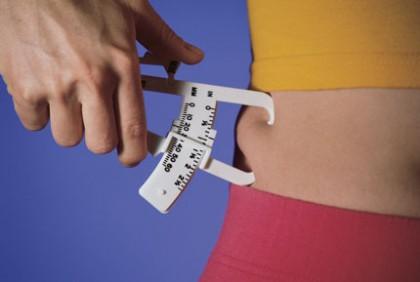Women's Physique

Tammy Strome is a Transformation Coach, Fitness Intuitive and IFBB Pro with 17 years in the industry as a Transformation specialist, Life Coach and Supplement Expert. She uses a combination of science, insight and intuition to help her clients sculpt their bodies and transform their lives. For more info on Tammy please visit her website at www.tammystrome.com or follow her on social media at FB: TammyStromeIFBBPro, Instagram @tammystromeIFBBPro and Twitter: @tammystrome

Your Pre-Competition Diet
Q. When making a diet for a competitor, how do you calculate the calories/macronutrients for each individual, and on what do you base your food choices?
A. Many equations are out there for determining calorie requirements, and some require significant use of a calculator as well as knowing fat mass. I use body fat calipers to determine overall body fat percentage and sometimes calculate calorie needs using fat-free mass. I’ve found however, that using total body mass versus fat-free mass makes very little difference, so I usually follow total body mass and base my calculation on that.
Here’s an easy one that can be used for quick reference:
Fat-Loss Goal:
Sedentary: Body weight × 10–12
Moderately Active: 3–4× per week: Bodyweight × 12–14
Very Active: 5–7× per week: Bodyweight × 14–16
This process isn’t black and white. Plans will be tweaked depending on the individual. I watch closely for cues with my clients and make adjustments as needed.
I adjust my clients’ macronutrient ratios based on a number of things—body composition, body type, fat distribution, age, gender, health history, prior lifestyle, activity level, activity type, and other aspects of biofeedback. I also develop clients’ plans based on the info they provide during screening. There’s also variance in what macronutrient ratio might yield the best results. A good baseline is 30 percent protein, 40 percent, carbs, and 30 percent fat, and amounts can be manipulated from there to give best results.
I always recommend the greatest nutritional density when it comes to food types. Fats are centered on healthy fats with moderate amounts of saturated fats: avocado, nuts, seeds, fattier fish, fish oil, and natural peanut butter.
Carbohydrates are centred on those that promote the greatest return nutrient-wise as well as stable blood sugar levels and good glycogen replenishment. Sweet potatoes, brown rice, squash, quinoa, and oatmeal are a few. High-glycemic carbs such as white bread, white rice, and dextrose serve a great purpose for refueling after training but should be avoided elsewhere in contest prep under most cases.
Proteins need to be the highest quality to maximize nitrogen retention and protein utilization. I recommend focusing on lean animal-sourced proteins such as skinless chicken breast, turkey breast, egg whites, lean white fish, and lean bison but also some fattier fish such as salmon for EPH and DHA and some red meat for heme iron in hard training.
I also love whey protein at the right points in contest prep. Whey is one of the only alkaline animal-derived proteins, so it’s great for optimal PH levels too. This is needed for fat burning and muscle building. Whey protein is also naturally high in BCAAs, which are anti-catabolic. Whey isolates in particular are highest in biological value and absorb quickly after training. They won’t keep you full for long, but they’re an excellent addition as a protein source. Everyone is a little different, but, to achieve peak contest condition, not everyone needs to eliminate whey protein.
Vegetables are also critical and you need to eat lots of them—six to eight servings per day. They’re fibrous, so they fill you up. They also balance PH and contribute important nutrients. I focus on the most nutrient-dense and recommend organic as much as possible. You can never eat too many vegetables. There may be some restrictions depending on your health. For example, I don’t recommend nightshade veggies such as peppers to people prone to inflammatory problems as these tend to aggravate them. There may be some limits placed on carrots, but it depends on the person’s metabolism, current body fat, and how much muscle he or she has.
I also believe in small amounts of fruit when carbs are low enough. Most research shows the fructose-to-triglyceride connection to be greater when glycogen stores are fully loaded. The fiber component also affects its digestion. Most people that are prepping for shows are burning through any carbs they’re taking in from fruit such as berries and grapefruits, and that can be very beneficial if properly timed. Again, I emphasize that some people can’t handle it, but most lean and metabolically healthy people can. I do not deprive my clients of what I know their bodies can handle.
For more on Tammy Strome visit her website at www.tammystrome.com

